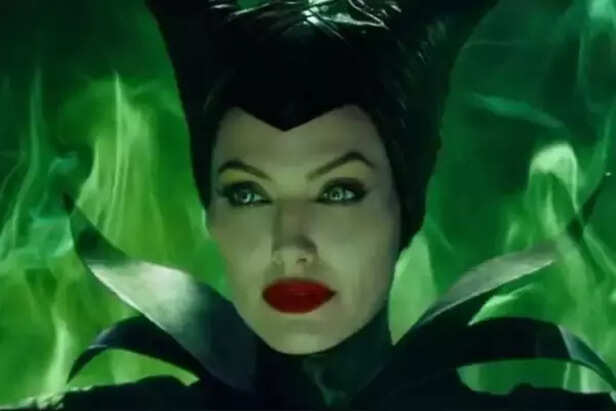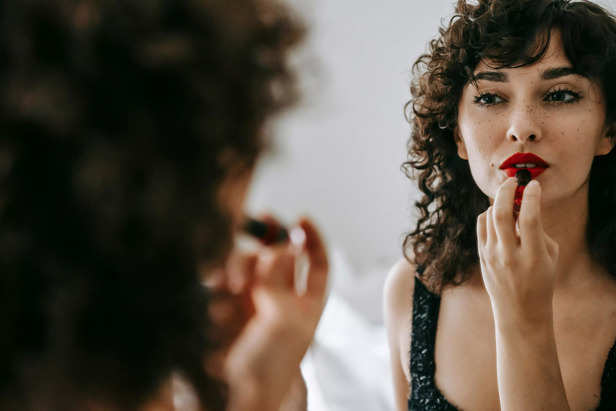The Untold Story of Demonizing Women: Why Society Labels Powerful Women as Evil
Riya Kumari | Jan 17, 2025, 23:18 IST
Red lipstick
You know the drill. A woman walks into a meeting, speaks her mind without apologizing, and suddenly she’s “too much.” Too loud, too confident, too… something. It’s like the world collectively decided that women are allowed to be smart or ambitious—but never both, and definitely not at full volume. The second you color outside those lines? Boom. You’re a “witch.”
Let’s get one thing straight: strong women don’t scare people because they’re evil—they scare people because they’re powerful. And history has a funny way of turning powerful women into villains, doesn’t it? You’ve seen it before. The boss who runs her company with precision is labeled “cold.” The woman who refuses to sugarcoat her ideas in a meeting is “aggressive.” The mother who prioritizes herself every once in a while is “selfish.” And when all else fails, we fall back on the oldest trope in the book: the witch. Yes, witches. Not the fictional, broom-riding kind, but the kind that have existed for centuries—because let’s be real, most of the women branded as “witches” were just too powerful for their time. And we’re still doing it today.
The Witch Hunt

Let’s take a stroll down history’s bitter memory lane, shall we? Back to the witch trials. The term witch was never really about spell-casting or devil-worshipping; it was about control. Those women who ended up in the pyres? They were often healers, midwives, or women who didn’t quite fit into the mold society had so generously carved out for them. In 15th and 16th-century Europe, the fear of witches wasn’t about the supernatural; it was about fear of the unknown—of women who knew too much, questioned too loudly, or existed too freely. These weren’t “evil” women. They were women with knowledge, agency, and independence, which to the fragile egos of the time, might as well have been black magic.
And don’t even get me started on Joan of Arc. A teenage girl, leading armies, claiming divine visions? Of course, she had to be burned at the stake. History labeled her a heretic, but let’s call it what it was: she embarrassed the powers that be simply by being too extraordinary. The playbook hasn’t changed much. Throughout the centuries, powerful women—from Cleopatra to Anne Boleyn to Malala Yousafzai—have been demonized, ostracized, or outright attacked. Because nothing threatens the status quo like a woman who refuses to stay silent.
The Witch Trope in Pop Culture

If you think the witch hunt ended in the 1600s, let me stop you right there. Today, it just looks different. It’s not the stake anymore; it’s the whispers, the smears, the relentless need to humble women who dare to aim higher than anyone expected. Pop culture loves to play along. Look at any “strong woman” character in film or TV, and there’s a good chance she’s been packaged as intimidating or unlikable. Think Miranda Priestly in The Devil Wears Prada—a genius at her job, but the narrative insists we pity her because she’s not “warm.” Or Cersei Lannister from Game of Thrones, who’s undeniably brilliant but conveniently painted as a villain for using her power unapologetically.
And the witch archetype? Oh, it thrives. From Disney villains like Maleficent to the complex portrayal of witches in The Witch or The Crucible, we’re still fascinated—and terrified—by women who wield power. These characters often reflect society’s anxieties about women stepping out of line. Their power makes them dangerous, their independence unnatural. But here’s the real plot twist: The reason we’re so drawn to these characters is because, deep down, we know they’re right.
The Uncomfortable Truth About Fear

The demonization of strong women isn’t just about sexism—it’s about fear. Fear of change. Fear of disruption. Fear of losing control. A powerful woman challenges everything society is built on: the idea that men lead and women follow, that ambition is masculine, and that success comes with a side of humility if you’re a woman. And it’s not just men who fall into this trap. Women have internalized it too. We’ve been taught to view each other with suspicion, to compete rather than collaborate, to whisper about the “arrogance” of women who dare to be great.
It’s a tale as old as time: Divide and conquer. The easiest way to keep women in their place is to make them distrust each other.
Reclaiming the Witch

But here’s the thing about witches: They don’t stay down for long. The narrative is shifting, albeit slowly. We’re starting to see powerful women reclaim the labels meant to tear them down. The “witch” has become a feminist icon, a symbol of rebellion, wisdom, and strength. Look no further than the rise of witchy aesthetics in fashion and social media, where women proudly identify as modern witches, embracing their power instead of apologizing for it.
In many ways, the witch is the perfect metaphor for the modern woman. She’s someone who refuses to conform, who draws her strength from within, who disrupts the status quo just by being unapologetically herself. And yes, that makes people uncomfortable. But maybe that’s the point.
The Legacy of Powerful Women

If history teaches us anything, it’s that strong women will always face resistance. But it also teaches us that they’re the ones who shape the world. So, the next time someone calls you “difficult” or “intimidating,” remember this: You’re in excellent company. You’re part of a long line of women who refused to be silenced, who turned their supposed flaws into strengths, who stood tall even when the world wanted them to shrink. Let them call you a witch. Wear it like a crown. Because the truth is, the world doesn’t fear you because you’re dangerous. The world fears you because you’re unstoppable.
The Witch Hunt

Witch
Let’s take a stroll down history’s bitter memory lane, shall we? Back to the witch trials. The term witch was never really about spell-casting or devil-worshipping; it was about control. Those women who ended up in the pyres? They were often healers, midwives, or women who didn’t quite fit into the mold society had so generously carved out for them. In 15th and 16th-century Europe, the fear of witches wasn’t about the supernatural; it was about fear of the unknown—of women who knew too much, questioned too loudly, or existed too freely. These weren’t “evil” women. They were women with knowledge, agency, and independence, which to the fragile egos of the time, might as well have been black magic.
And don’t even get me started on Joan of Arc. A teenage girl, leading armies, claiming divine visions? Of course, she had to be burned at the stake. History labeled her a heretic, but let’s call it what it was: she embarrassed the powers that be simply by being too extraordinary. The playbook hasn’t changed much. Throughout the centuries, powerful women—from Cleopatra to Anne Boleyn to Malala Yousafzai—have been demonized, ostracized, or outright attacked. Because nothing threatens the status quo like a woman who refuses to stay silent.
The Witch Trope in Pop Culture

Maleficent
If you think the witch hunt ended in the 1600s, let me stop you right there. Today, it just looks different. It’s not the stake anymore; it’s the whispers, the smears, the relentless need to humble women who dare to aim higher than anyone expected. Pop culture loves to play along. Look at any “strong woman” character in film or TV, and there’s a good chance she’s been packaged as intimidating or unlikable. Think Miranda Priestly in The Devil Wears Prada—a genius at her job, but the narrative insists we pity her because she’s not “warm.” Or Cersei Lannister from Game of Thrones, who’s undeniably brilliant but conveniently painted as a villain for using her power unapologetically.
And the witch archetype? Oh, it thrives. From Disney villains like Maleficent to the complex portrayal of witches in The Witch or The Crucible, we’re still fascinated—and terrified—by women who wield power. These characters often reflect society’s anxieties about women stepping out of line. Their power makes them dangerous, their independence unnatural. But here’s the real plot twist: The reason we’re so drawn to these characters is because, deep down, we know they’re right.
The Uncomfortable Truth About Fear

Lipstick
The demonization of strong women isn’t just about sexism—it’s about fear. Fear of change. Fear of disruption. Fear of losing control. A powerful woman challenges everything society is built on: the idea that men lead and women follow, that ambition is masculine, and that success comes with a side of humility if you’re a woman. And it’s not just men who fall into this trap. Women have internalized it too. We’ve been taught to view each other with suspicion, to compete rather than collaborate, to whisper about the “arrogance” of women who dare to be great.
It’s a tale as old as time: Divide and conquer. The easiest way to keep women in their place is to make them distrust each other.
Reclaiming the Witch

Modern woman
But here’s the thing about witches: They don’t stay down for long. The narrative is shifting, albeit slowly. We’re starting to see powerful women reclaim the labels meant to tear them down. The “witch” has become a feminist icon, a symbol of rebellion, wisdom, and strength. Look no further than the rise of witchy aesthetics in fashion and social media, where women proudly identify as modern witches, embracing their power instead of apologizing for it.
In many ways, the witch is the perfect metaphor for the modern woman. She’s someone who refuses to conform, who draws her strength from within, who disrupts the status quo just by being unapologetically herself. And yes, that makes people uncomfortable. But maybe that’s the point.
The Legacy of Powerful Women

Strong woman
If history teaches us anything, it’s that strong women will always face resistance. But it also teaches us that they’re the ones who shape the world. So, the next time someone calls you “difficult” or “intimidating,” remember this: You’re in excellent company. You’re part of a long line of women who refused to be silenced, who turned their supposed flaws into strengths, who stood tall even when the world wanted them to shrink. Let them call you a witch. Wear it like a crown. Because the truth is, the world doesn’t fear you because you’re dangerous. The world fears you because you’re unstoppable.
